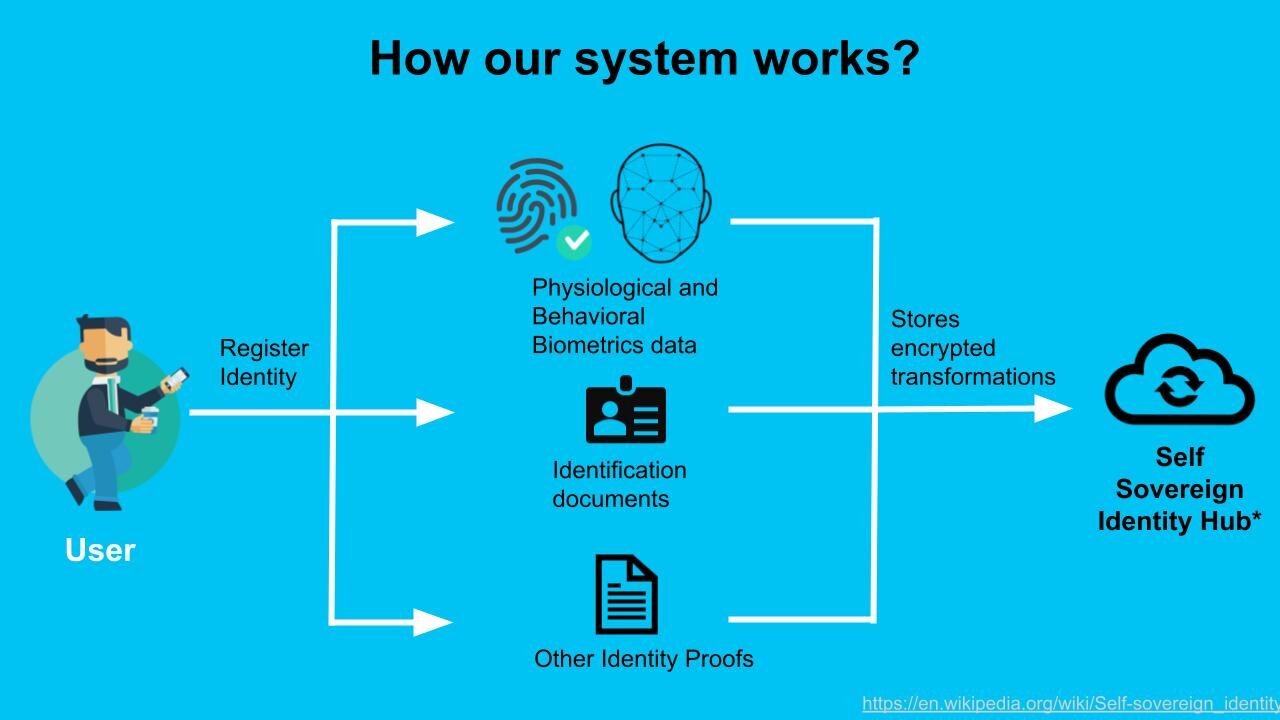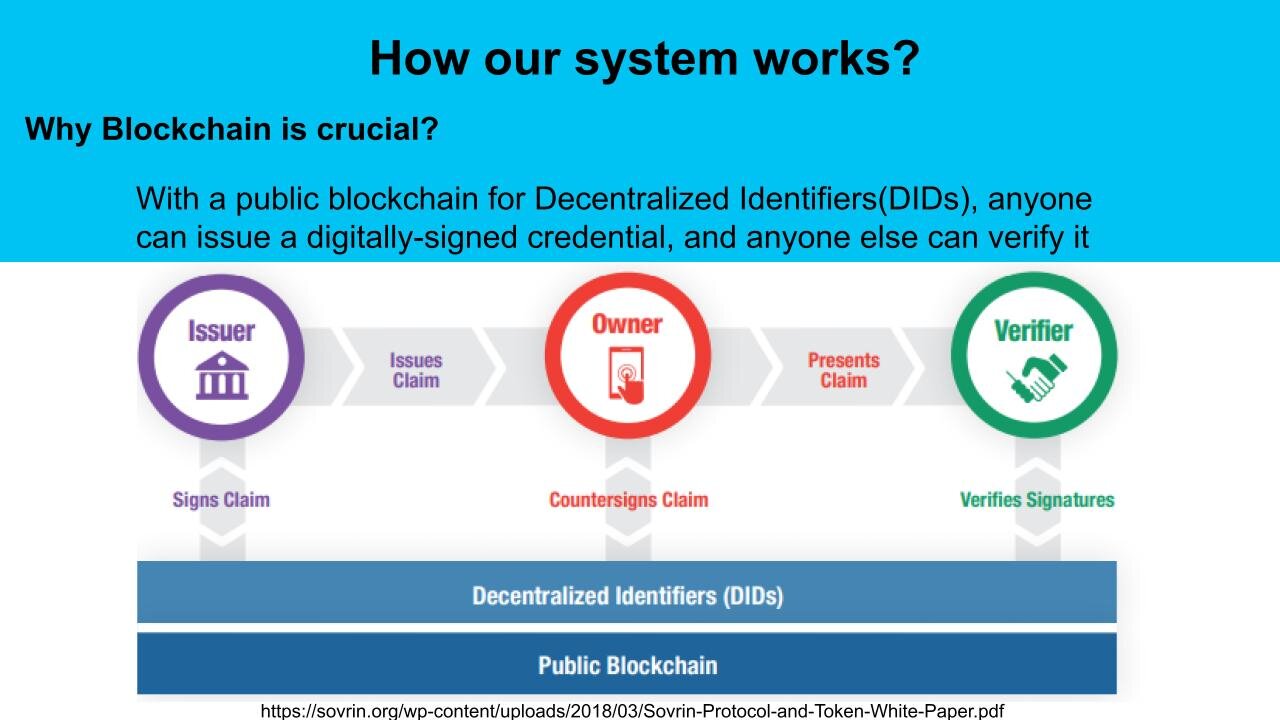Solutions and Projects
Digital ID FOR ALL
Many citizens in the developing world lack identification largely due to their socio-economic status. This means they cannot participate in activities asserting their fundamental human rights, like voting and healthcare access. They are also excluded from services that would improve their financial status, such as applying for loans.
The problems we are solving
Most identity solutions try to solve just one side of the problem, either the demand or the supply side. We aim to solve both sides, accommodating both the individual and the corporate.
Our Digital ID For All solution, on the one hand, provides individuals with the easiest and most inclusive way to prove their identity, and on the other, equips solution providers like banks, hospitals, and even local government units with an automated yet secure way of verifying the user's identity.
Let’s see how it works.
Demand Side: • Too much darn work
Whether it’s the regulations or just internal policies, most service providers make it very difficult for individuals to prove their identity. Service providers require forms that run into multiple pages to be painstakingly and manually filled every time, causing great inconvenience to people.
Demand Side: • Most citizens automatically excluded
Most ID verifications like driver's license or passport, by their very nature, exclude a large number of individuals. For example, driver's licenses exclude those who cannot afford to own a car; passports exclude those who cannot afford to travel abroad.
Again, registering yourself and showing proof of identity requires you to be physically present at the identity provider’s office. Since these offices are usually located in the major cities, they are generally out of reach to people who live in rural or remote areas.
Demand Side: People feel that they don't own their identity
Individuals do not feel their data is protected. Most identity providers, whether government institutions or even online identity providers, have Terms and Conditions permitting them to own your information. To add salt to the wound, these entities do not generally do a good job of protecting your personal data and may use it for commercial benefit for themselves – but not for you, the owner.
Supply Side: Verifying someone's identity is difficult and costly
Taking an example from one industry, do you know that the financial service industry spends USD270B a year just on compliance? See https://internationalbanker.com/technology/the-cost-of-compliance. Experts predict that this will take 10% off the industry's revenues. This is because financial services firms have to maintain an army of staff and spend billions on admin overheads for customer due diligence and Know Your Customer protocols (KYC) to ensure you are who you say you are. Some companies have introduced easier KYC procedures like biometrics, and governments have launched national ID systems. But still, many of these initiatives have failed to attain even modest levels of usage.
The Solution
Our proposal is to have a unified end-to-end Identity-as-a-service platform that automates identity verification and KYC. It is powered by Self Sovereign Identity (SSI) and AI Technology.
How can this benefit the Individual and the Corporate?
Demand Side: By using a device that everyone has and empowering it with AI automation, so that encoding your identity is accessible and easy to perform.
Lower costs have made smartphones affordable to more than 90% of the developing world. In fact, go to any small store in even the smallest towns and you will not find a "dumb phone." Our solution uses what you have in your hand, so you don't have to travel to the nearest government office to register your identity or be excluded because you do not possess a driver's license. From the get-go, smartphones have way better reach than any identity proofs out there, even if citizens are legally required to have them.
Smartphones solve the adaption problem. And yet that is not enough…
There have been rapid advancements in Artificial Intelligence, particularly in neural networks and natural language processing (NLP). With NLP technology built into your smartphone, encoding and registering your identity will take the minimum of effort.
Smartphones are not just platforms for talking to your friends and watching YouTube. When reinforced by AI, they are also excellent platforms for capturing conventional identity particulars like your name, date of birth, and address. AI can also process biometrics like fingerprints and even your voice and ears. What’s more, AI can further strengthen the evidence that you are uniquely you by processing other proofs of identity (hitherto unheard of because we lacked the technology and expertise) such as your movement, or your website behavior.
The more proofs we can configure to verify your uniqueness and who you say you are, the stronger that identity system.
Demand Side: Self-sovereign identity
Recent developments in blockchain and cryptology now make it possible for people to start owning their identity and allowing service providers to access these identity proofs without losing ownership or control. Self-Sovereign Identity addresses the root issue of establishing trust. To be trusted, one party in an interaction will present their credentials to the other parties, and those parties can verify that the credentials come from an issuer that they trust. The good thing is that you maintain ownership and control of the identity proofs (aka verifiable credentials) that you hold because your consent is required to use those credentials.
Our Digital ID For All solution integrates the Self-sovereign identity (SSI) paradigm and open source projects like Sovrin. More importantly, we build on top SSI using AI.
Supply Side: Equipping solution providers with an automated yet secure way of verifying the individual's identity
The combination of AI-powered identity registration with a high adaption capability and a decentralized, blockchain-based verification system provides service providers with a highly automated and secure means of identity verification. If we can generate savings on admin costs for service providers, for example, banks, then they are incentivized to break financial exclusion because it now makes financial sense, i.e., is profitable, for them to accommodate all users.
What is the user and service provider experience?
We can go on all day about AI, deep learning, blockchain and all these solutions. But at the end of the day, what is the experience for the individual, and what is the experience for the service provider?
While everything is still in development, we are happy to share our early iterations here. Please see the video below.
Invitation: Do you want to solve little problems or big problems that benefit billions of people worldwide.
Turing Machines is committed to using technology primarily to help those in need. Identity is not a first-world problem. It is not just a financial inclusion problem. Neither is it a Filipino problem. It is a problem of human rights and it currently works against third-world citizens.
Turing Machines is committed to using its expertise in AI and blockchain to help solve this human imbalance. This solution is not a business right now but it will soon be. Turing Machines is in the R&D stage and will be publishing its results publicly and sharing its code as open-source material.
If you want to solve real problems – not the little ones like increasing the revenue of some company or elitist problems like Elon Musk trying to fly people to Mars – but problems that actually help the billions of people on this planet who need the most help, then welcome to this community!







